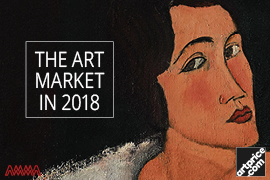Editorial by thierry Ehrmann, founder and CEO of Artprice.com
Against the backdrop of ever-deepening globalisation, a global vision of the Art Market has become indispensable. In less than ten years, China has managed to impose itself as a global giant and is now challenging the West’s domination of the market.
The merger of Artprice’s and Artron’s editorial teams allows us to analyse these two markets with all their specificities. Our alliance represents a key moment for the Art Market as it makes a long overdue expansion from its Euro-American history to include Greater Asia. Today, this new zone accounts for over a third of the global value of the Art Market, and could well dominate it within five to ten years.
From a financial perspective, the Asia-Pacific region is at the epicentre of the world’s capital flows. However, it is also an extraordinarily rich area for Contemporary creation, today the Art Market’s principal growth driver. The primary specificity of the Asian Art Market is an extraordinary capacity for blending different genres: in China, there are artists who mix traditional practices of painting and calligraphy with extremely original approaches, often using the very latest technical or electronic procedures.
In an increasingly undifferentiated world, art (whatever its final price) stands out for its intrinsic heterogeneity. Its market still has enormous growth potential precisely because it is the market for originality and uniqueness par excellence, in a world where everything can be reproduced.
The Art Market’s principal motivation has always been to seek the exceptional and the rare. The quest for strong sensations is an inherent characteristic of its history and its market: by acquiring an artwork, the collector also acquires an extraordinary history.
Collectors are naturally on the lookout for the right work by the right artist at the right time and at the right price, but they are also looking for a story that they relates to. In spite of these ‘search criteria’, the Art Market posts a global average 30% to 35% unsold rate, a key indicator of the Market’s health. The inescapable processes of selection – indispensable to the Market’s refinement – are at the heart of the Museum Industry, the growth of which represents a genuine revolution in Art History.
Museums have in effect become the Temples of our 21st century: the number of visitors has multiplied by at least ten over the last 20 years. This represents an outstanding growth rate and it has been accompanied by the development of an entertainment market offering all manner of interactivity, derivatives, virtual visits, etc. In sum, with the museums, the galleries and the auction houses, art has become a vast domain for leisure, discovery, education and curiosity.







 0
0
